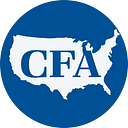Amazon’s “Dark Patterns” & How They Keep You From Cancelling Prime
By: Susan Grant, CFA Director of Consumer Protection & Privacy
If you’ve ever had trouble cancelling an online service, you may be interested in a study the Norwegian Consumer Council (NCC) recently conducted that documents the sophisticated methods Amazon uses to keep consumers who signed up for free trials of Prime from leaving. Apparently the process is the same when consumers try to cancel their regular Prime subscriptions. The NCC tells me that since releasing the report it has received tips from many consumers about similar problems with other companies. In fact, when the NCC surveyed people last year about their subscriptions to digital content, 26% said they’d had problems with cancelling.
It’s OK for a company to ask you to confirm that you want to cancel an online service — maybe you clicked on the wrong thing or have second thoughts. But it’s not fair to deliberately throw multiple roadblocks in your way, especially if you’re trying to cancel a free trail offer to avoid being charged. That’s why the Restore Online Shoppers’ Confidence Act (ROSCA), a federal law, requires that negative option sales made on the internet provide “simple mechanisms for a consumer to stop recurring charges from being placed on the consumer’s credit card, debit card, bank account, or other financial account.”
The NCC’s study revealed that there was nothing simple about attempting to cancel the Prime membership. Amazon uses a number of “dark patterns,” design techniques that are intended to manipulate people, to thwart Prime users’ desire to cancel, including “complicated navigation menus, skewed wording, confusing choices, and repeated nudging.” It’s hard to even find the option to cancel. If you get as far as “Prime membership” and click on it, there is a prominent link to see your Prime benefits, and a less conspicuous one to “Manage membership.” From there the last choice is to “End membership,” but that’s just the beginning of a process in which you are warned about all the get benefits you’ll lose, a technique experts call “confirmshaming.” There are several more steps along the way in which you’ll be warned about what you’ll miss if you leave and offered special deals if you stay.
If you haven’t been dissuaded and finally cancel, you’ll get an email with a heading that says “Oh no! Your Prime benefits are ending!” and a bright yellow button to “Continue Your Membership.” Sometimes users are presented with a five-minute survey to complete before they can cancel.
As the NCC points out, the number of clicks necessary to find the unsubscribe settings means that it’s unlikely that anyone would start the process by mistake. The phrases that Amazon uses (for instance, after the initial “End membership” it becomes “Cancel My Benefits”), the multiple pages it forces consumers to go to, the scary warning graphics and other design features it employs, and the last-minute incentives to continue are all aimed at preventing consumers from doing what they set out to do.
CFA and other groups have sent a letter to the Federal Trade Commission asking it to investigate Amazon’s practices and take appropriate actions for any violations of U.S. law. We also urged the agency to work with Congress on legislation to prohibit the use of dark patterns online. Consumers shouldn’t be have to go through this kind of ordeal to stop being charged for online services they don’t want.
